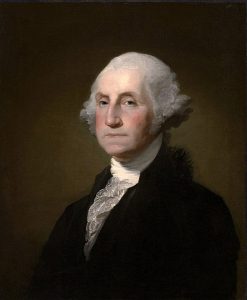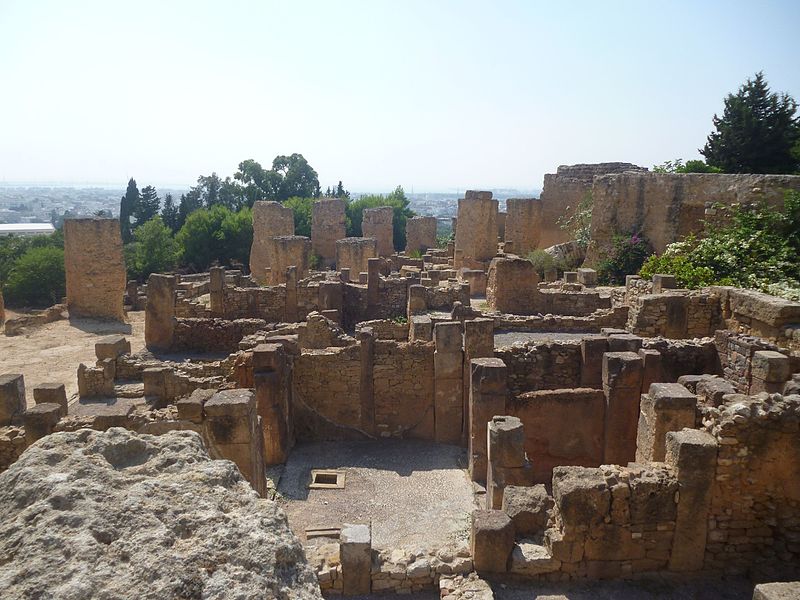I owe a lot to Sid Meier. In 1991 he released the first installment in what would become the wildly successful series of turn-based strategy games for the computer: Civilization. I received a copy of Civilization II while in elementary school, and have since played every installment in the series up to 2017’s Civilization VI. In Civilization, a player takes control of a real-world empire, guiding them from the dawn of time to the unknown future: ideally, as the series tagline reminds you, standing up to the test of time. Each installment includes a “Civilopedia,” which explains the real world historical background behind the empires, leaders, military units, and buildings included in the game. As a young player, I’d read these entries between turns, frequently inspiring me to seek out more information outside the game and setting me upon the path of historical scholarship.

As a game, Civilization is driven mostly by land acquisition and military conquest. The series seldom dips into significant factors that influenced the development of real world nations, such as relations between peoples or politics, with aspects such as religion and diplomacy playing small, tertiary roles. Civilization, however, was never meant to be a historical simulation: it is a game dressed in historical colors. As the game has developed, however, what was originally primarily cosmetic differences between each playable empire has developed into something much more. The original Civilization featured only fourteen playable empires, with no substantial differences between them. Civilization V, which received its final content update in 2013, clocked in at forty-three, with each empire featuring a unique units and buildings, as well as a fully animated and voiced leader interacted with when conducting diplomacy. Civilization VI, continuing to receive updates, seems on track to beat this record, with each empire receiving even more unique bonuses derived from their history.
Since moving on from the Civilopedia to the academic study of history, however, in tandem with the growing detail of the series, I’ve started to reflect upon the developers’ choices when choosing what to include — or what not to include — in Civilization. The very name of the series itself has begun to strike me as ill-fitting, for it suggests a larger cultural grouping than is reflected by the playable empires. Would anyone, for instance, refer to the United States as the “American Civilization” rather than part of a wider Western context? And yet, to render the United States and much of the playable European empires as one Western entity would no doubt be met with outrage, as it would not allow the complexities of many of the component parts to be properly reflected. And yet, this is the exact approach the developers of Civilization have taken in the past with playable empires such as “The Celts” (Civs II-V), “The Vikings” (Civs II-IV), and, to justifiable backlash, “The Native Americans” (Civ IV). The label of “civilization” is perhaps fitting in the millennia-long time span of the game, but for the most part each playable empire is just that– an empire rather than a defined “civilization.” Of course, even this definition of empires rather than civilizations is problematic, as not all groups of people represented in the games were historically empires, which some rejecting that label completely. The latest update to Civilization VI, launched this past February, added the Cree Nation to the playable roster. While Civilization’s developers collaborated with modern day Cree on some aspects of the in-game Cree’s development, others are less than pleased, believing that the Cree’s representation in the game suggests that the Cree historically shared values with imperialist Western powers. After all, the gameplay of Civilization remains geared, in large part, to conquest and empire-building.

Another oddity of representation among the playable empires is the time period each represents. For empires with a more-or-less consistent, unified history, this is not a problem. An England led by Queen Elizabeth and constructing longbowmen and ships-of-the-line is not so strange despite their temporal separation, as they were all component parts of the consistently existing Kingdom of England. For others, though, such as Germany and India, they appear as strange amalgamations. India in Civilization VI, for instance, is led by Gandhi, who is capable of building stepwells and war elephants straight out of India’s much earlier history, before a unified nation or empire so named “India” existed. Other playable empires, however, lock themselves into very specific timeframes. Persia, playable in most of the game’s installments, has always exclusively been represented by leaders, units, and buildings from the Achaemenid Empire, ignoring all history that comes later. Rome, of course, has always been represented as well, with their legions and forums. If a temporally wide India is acceptable, would not an “Italy” led by Augustus Caesar commanding condottieri and Ostrogoths be as well?
One explanation for the Civilization series’ uneven definition of civilizations and empires is, of course, the context that it exists in: a game developed in the west. The Arabian empire was not added to the series until Civilization III despite the immensely important role the Islamic world has historically played, while Civilization II had featured the Vikings, Celts, and Carthage. The series has always been skewed towards western empires as the developers attempt to strike a balance between global representation and empires recognizable to their western-dominated market audience. This is likely why India persists as one empire rather than, for instance, the Gupta and the Mughal, where western empires who could justifiably receive a similar treatment do not. Scotland has recently been added to England in Civilization VI, for instance, though no installment in the series has featured the British as a unified whole. It is likely for this very same reason that Persia will always be represented as Achaemenid: it is the vision of Persia immortalized through the lens of classical western history.
Some non-western empires have become mainstays of the series owing to the fans they have acquired over the years: no

Civilization installment would be complete without Shaka Zulu, Genghis Khan, or Montezuma, for instance. This is, however, despite the fact that Genghis Khan remains one of history’s most prolific killers: likely one who would be reviled and spoken of with dread if he lived much closer to the present. Strangely, however, the developers of Civilization have previously not shied away from leaders who fit that description: Mao Zedong led China in the series from Civilizations I to IV and Joseph Stalin for Russia in I and IV. Adolf Hitler has never appeared, fortunately. If I had to predict, I’d say that Mao and Stalin will not return either, as the most recent installments have focused more on the imperial rather than communist era of both their nations. The choices of leaders for other empires have been criticized for being ill-fitting and unworthy when compared to others from their empire: such as Maria I of Portugal in V and Queen Catherine de Medici for France in VI. The developers of Civilization have made it known that, when choosing an empire’s leader in the same, they seek out interesting figures with dynamic personalities that would lend themselves well to the caricatured style that many of the games’ leaders take on. The disappearance of the communist dictators and the appearance of many more women leaders in the most recent installments of the series, however, also makes it clear that they are stepping away from brutal, if famous, modern leaders and stepping towards a policy of representation, highlighting often overlooked women in history.
Ultimately, I must reiterate my original reflection upon the series: Civilization is a game dressed in historical clothes. As a series, it does not and has never been meant to fully and accurately represent history. The identity of nations and empires and how they are represented is, however, a thorny subject which the games have always had to address: sometimes successfully, and sometimes less so. Though I believe the series has improved in its handling of these issues over time, there is still work to be done, and I believe the development team behind the series would benefit from further and deeper considerations of of the ramifications behind their depictions. Decisions to remove controversial leaders and include more diverse leaders and empires in the series’ later installment, as well as deeper mechanics for aspects of the game not related to warfare, show that the development team is considering this. While there will be and have been missteps along the way, they serve to move the series towards something better, continually learning from mistakes and improving. Perhaps just as importantly, however, if I can assume my story is not unique, Civilization inspires many of its players to think deeply about history themselves, helping to close the gap between an entertaining game experience and true learning. That’s more than many can take credit for.

2 replies on “Civilization: Withstanding the Test of Time (With A Few Dark Ages)”
Heck, even the title of the game is loaded.
I remember the first installment!